A peek inside Japan's largest Dagashi store

Every morning, 67-year Hideyuki Akiyama drives to his store along the rural roads of Okayama in Western Japan. Today is no different. A line of excited customers queuing up before the shutters are open.
“Disneyland isn’t our land of dreams, this is!” says one 20-something woman.
“This” is Nihon-ichi no Dagashi Uriba. This mouthful of a name, is Japan’s largest “dagashi” store.
Dagashi
Dagashi (駄菓子) are small, inexpensive Japanese confectionery and snacks you would find in corner stores. 10 yen for an Umaibou, 30 yen for a Cabbage Tarou. It’s what you would buy on your walk back home from school and fight with friends over.
Dagashi, unlike it's cousin the Wagashi, has connotations of cheapness. The da (駄) in dagashi means “poor” or “cheap”. In the 19th century when refined white sugar was imported to Japan it was considered a better, richer ingredient. With this shift, sweets made of the domestic brown sugar were looked down upon and got the pejorative name of dagashi.
Don't let the name fool you though. Dagashi cover a wide array of delicious sweet and savory items, despite the lower price points.
Dagashi in the modern age
Dagashi are usually manufactured by small companies, at small scale and low prices, but with lots of thought given to what will bring their customers – children – the most joy. A 100-yen prize sticker in one, a free snack in another, collect-and-win in another, and so on. These sweets have defined the early years of many generations of children.
These iconic sweets now face a difficult future in a changing Japan.
In the new Japan, gone are the corner stores that would hand out free candy for stickers and gone are the days of stores dealing in inexpensive items with slim margins. These have since been replaced by national chains of convenience stores and supermarkets – big companies that have neither the patience nor the incentive to sell a 10-yen pack of ramen snacks and help run the manufacturer’s collect-and-win program for children.
Dagashi manufacturers face significant cost pressures, have low margins and logistical challenges, but continue tirelessly because they believe it is important to keep this part of Japan’s culture alive.
Nihon-ichi no Dagashi Uriba
Hideyuki wants to do everything he can to pass the dagashi tradition on to the next generation.
His store, Nihon-ichi no Dagashi Uriba (literally “Japan's biggest dagashi store”), sits on a 25,000 square foot plot in Okayama prefecture, 700 km from Tokyo.
Though only about a quarter the size of your average Costco, it plays an outsized role in Japan’s dagashi industry.

Visitors are greeted by row upon row, aisle upon aisle of Japanese sweets and snacks, many available only here. Hideyuki estimates they carry over 50,000 types of dagashi on any given day.
For children visiting – often with grandparents looking to indulge them – this is a.. kid in a candy store situation.
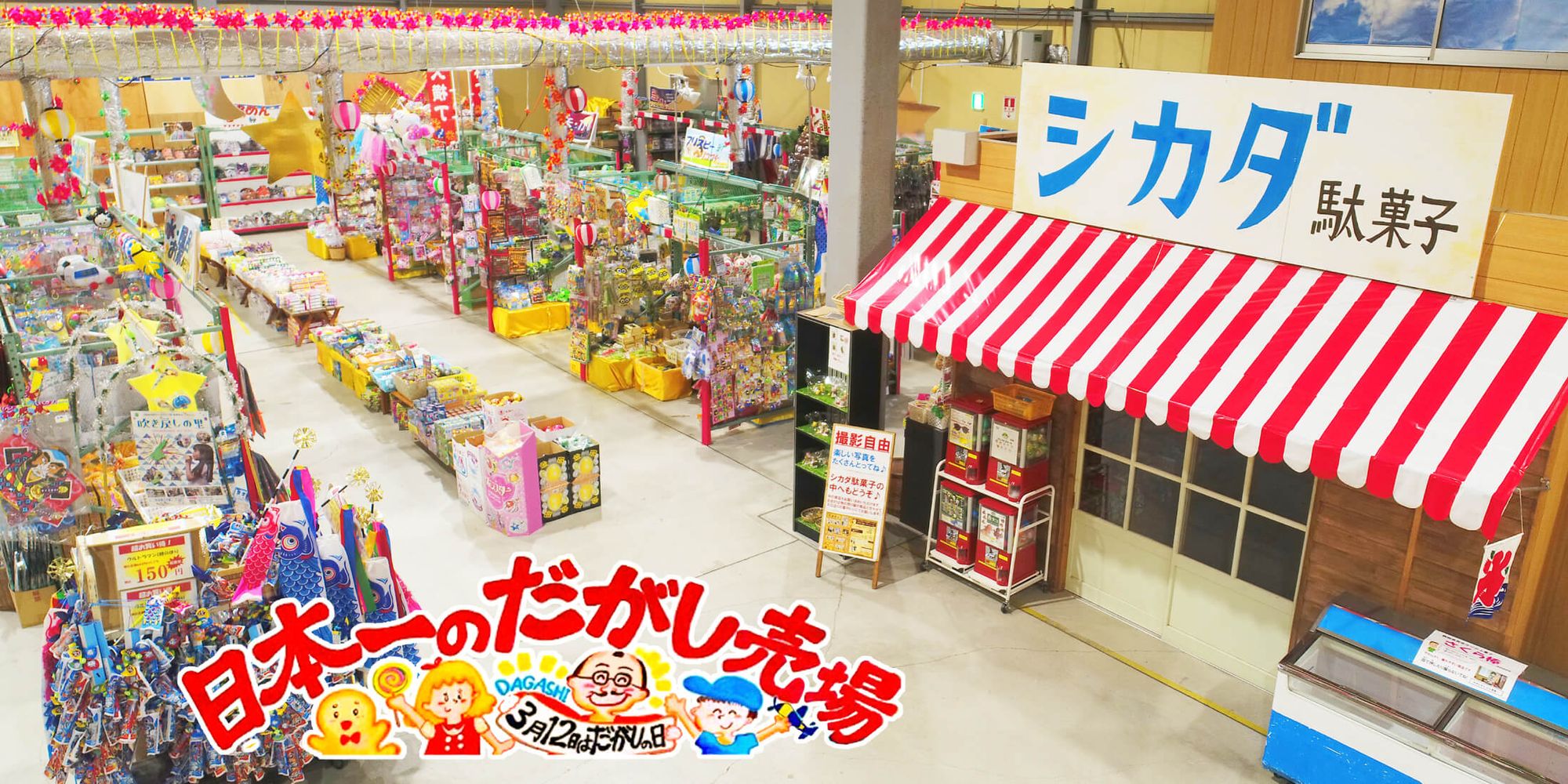
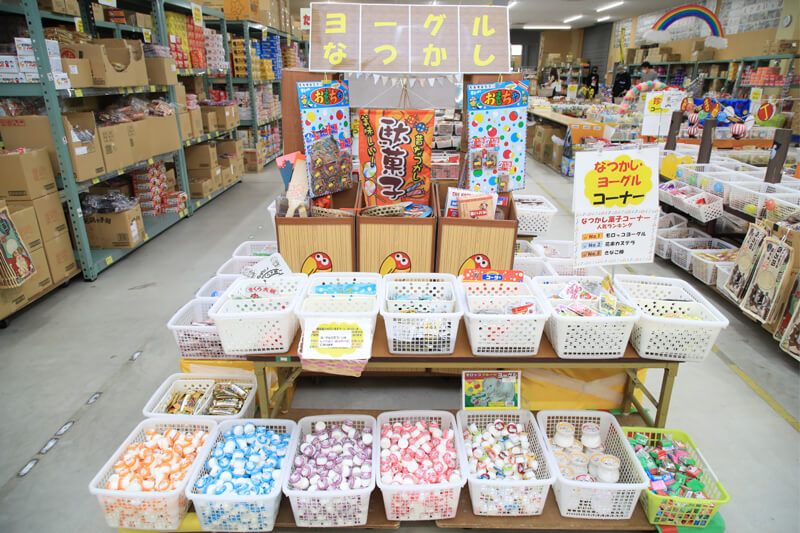
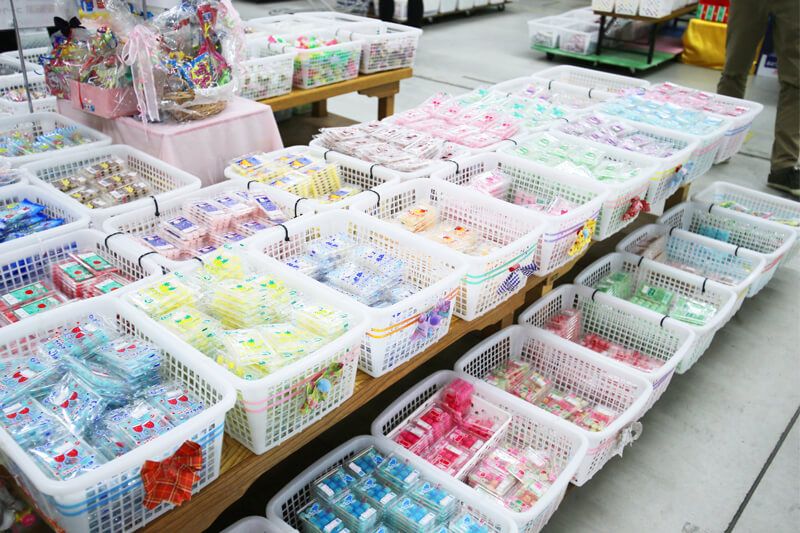
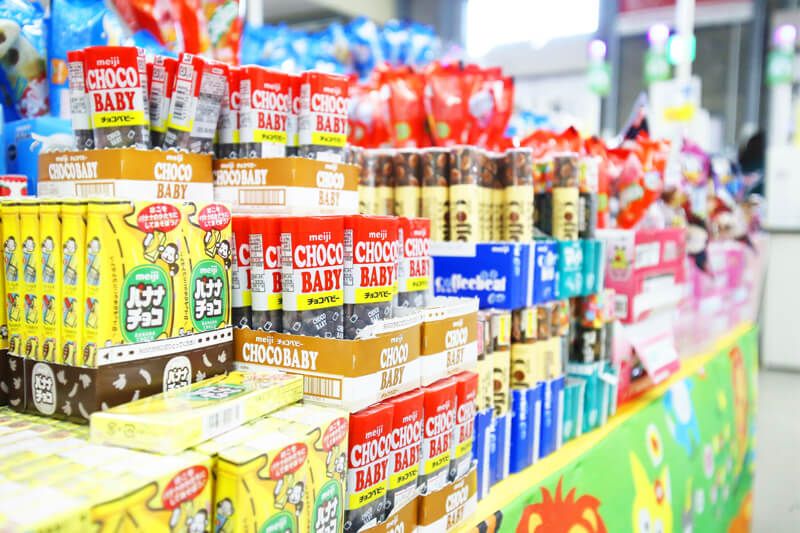
In a 60-minute shopping spree one man’s three grandchildren loaded their baskets with over 300 items, racking up a bill of 13,000 yen (~100 dollars). Even in the middle of Japan's meteoric inflation the grandfather doesn’t mind. “The smile on their faces is priceless”, he says with a smile himself.
Every year the store attracts 700,000 visitors. Residents of Osafune, a rural town of 12,000, love that their town now attracts over visitors not just from every corner of Japan but also from abroad, to try dagashi they couldn’t find anywhere else.
“I had to do that thing which no business owner should ever do – lay people off. And I've had to do it twice.”
From 3 decades of ups and downs
Hideyuki has been in the dagashi business for over 3 decades and has seen his share of ups and downs. He says “People now say I have succeeded in this business but they don't realize how many failures it took and how lucky I got. Very few people know that I had to do that thing which no business owner should ever do – lay people off. And I've had to do it twice.”
Hideyuki initially ran a regular confectionery store but the business failed because it became a price race to the bottom. He had to downsize his company in 2010.
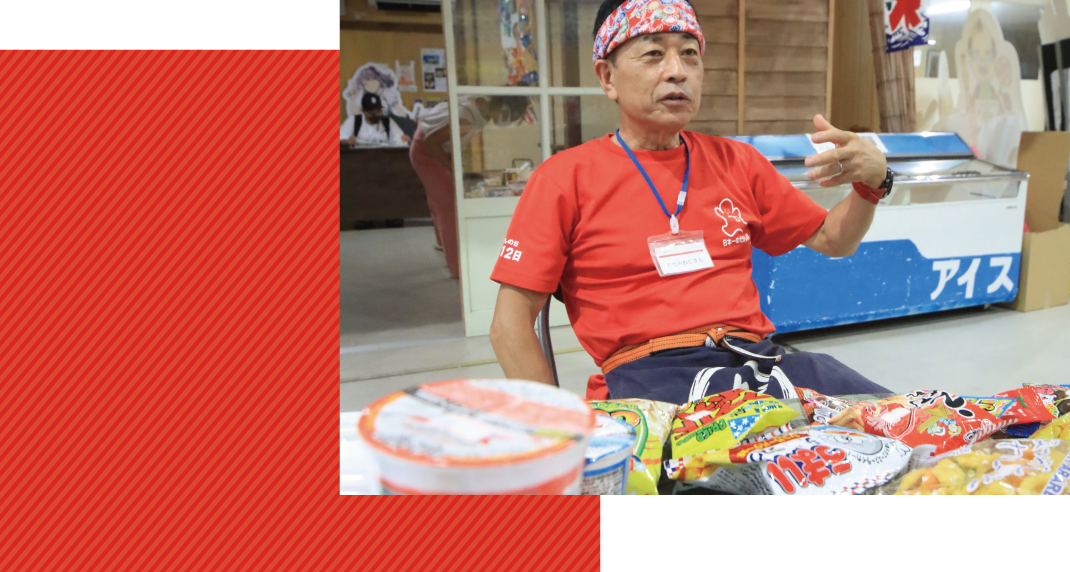
But now he had inventory that would soon expire. So he organized a “Dagashi Matsuri” (Dagashi Festival) to celebrate dagashi but also to sell this inventory that would soon go to waste. The response to this festival was so good that he did it once more!
The festivals became an event that families in the nearby towns loved attending and this planted the seed in Hideyuki's mind to make them a permanent fixture.
Hideyuki saw that many dagashi manufacturers were dying out because nobody would sell their low-margin, low-price products while at the same time children thoroughly enjoyed visiting his store and even challenged him on having fewer varieties than other stores.
Thus, when he started Nihon-ichi no Dagashi Uriba in 2014 his vision was twofold: to provide one roof under which dagashi manufacturers could thrive and to bring joy to children by keeping the tradition alive.
In keeping with this vision, most items in the store are inexpensive and easily fit the budgets of children who save up to visit. They are also rounded to the nearest 10 yen so doing math is easy for the kids.
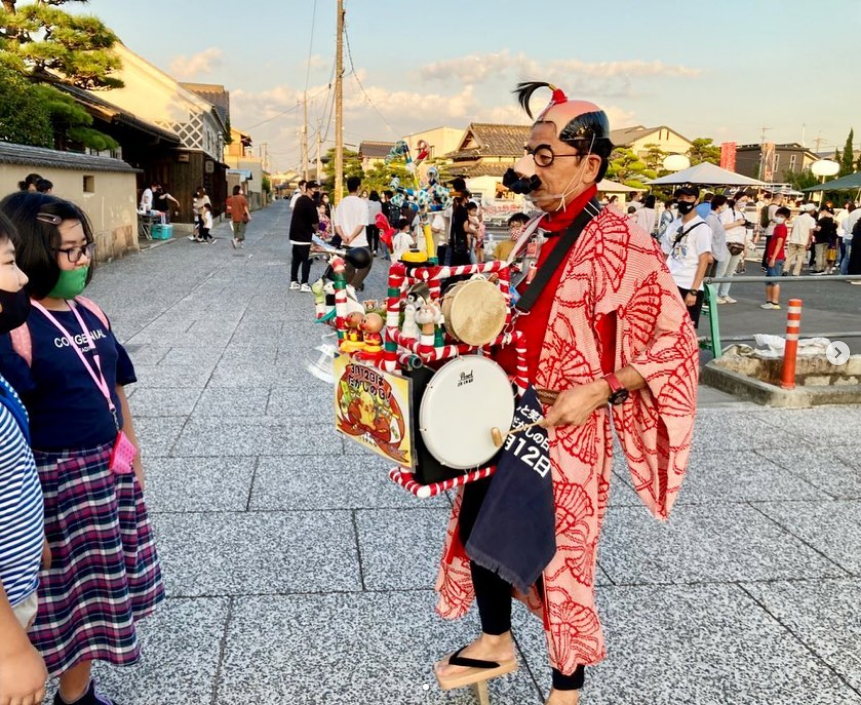
Every weekend, Hideyuki also dresses up as Chindonya-san, a fun, clownish character who walks around the store playing toy instruments and hands out candy to children. Just to remind you, this is the CEO of the company walking around as a funny character in an elaborate costume, handing out sweets to kids and playing games with them. I like to think stuff like this happens only in Japan :)
In another part of the store, we hear loud cheering, as a group of students open their snacks and discover what they have won. Nihon-ichi no Dagashi Uriba has a whole section allocated to keeping such simple joys alive.
For those who think the store only caters to children, rest assured that adults, young and old alike, throng the aisles, rekindling old memories and creating new ones.
Hideyuki’s goal for the store is really for it to become a theme park for dagashi, where children, parents, and grandparents from all over the world visit and enjoy their day.
The business with no intention of business-ing
Nihon-ichi no Dagashi Uriba is.. different. They don't sell most popular items. They instead stock the not-so-popular, odd, quirky products that others will not.
When asked about the future of the business, Hideyuki says he has no intention of doing business (in pursuit of profits) at all. He believes businesses exist to serve society and contribute back to people in the community. That they make profits are merely a side effect and that somewhere along the line the side effect became the main goal.
He says, at the end of the day, “We run this store so we can see the joy on children's faces”.
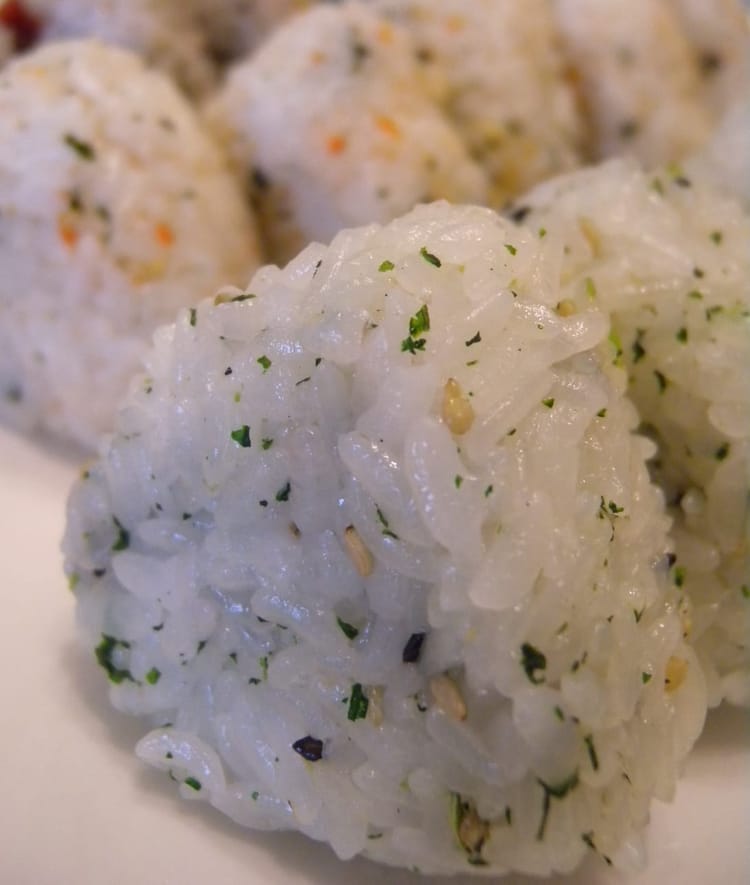
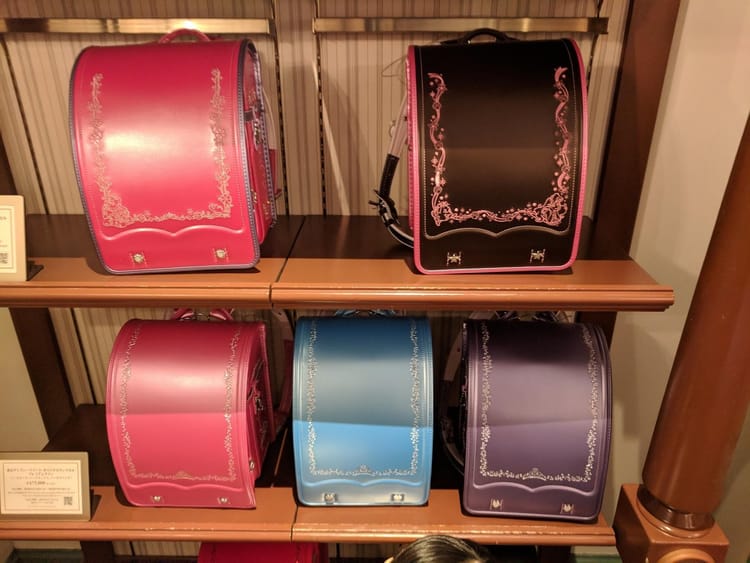
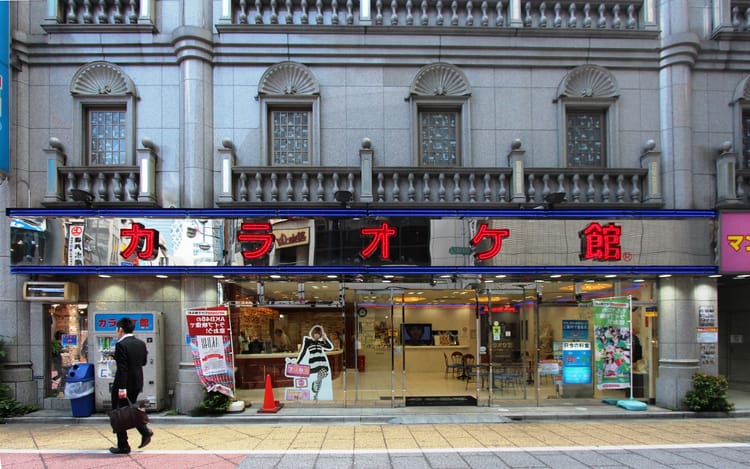
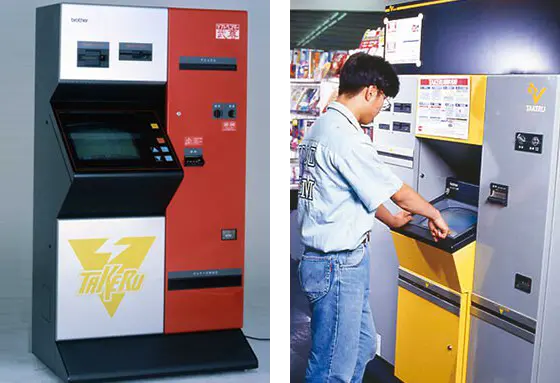
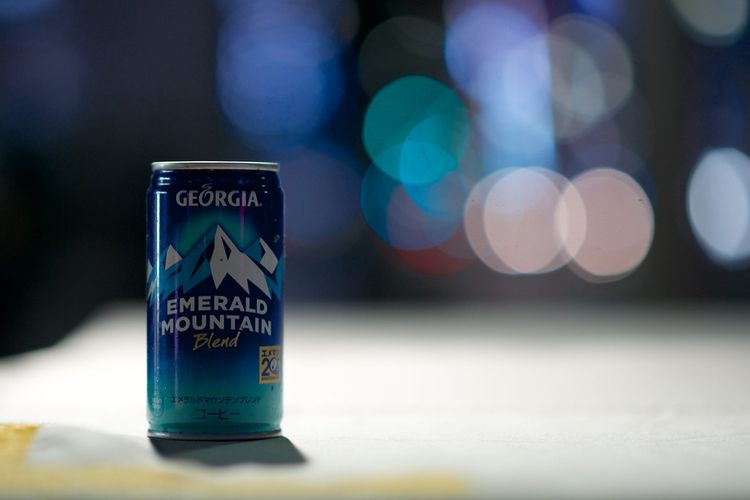
Member discussion